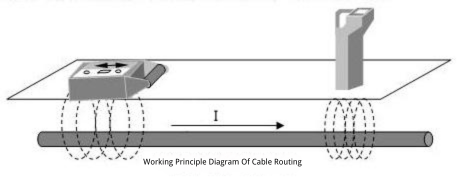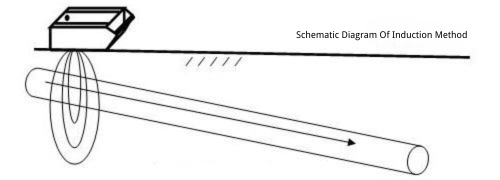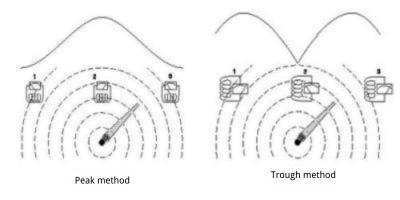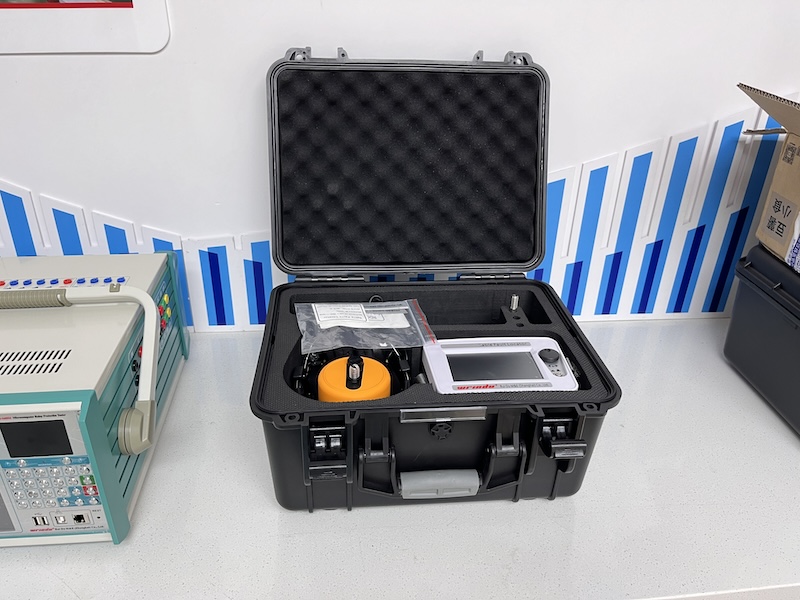The working principle of underground cable pathfinder
Underground cable path detection is a very important work, in a ground construction, we need to know the situation of the underground cable, which requires the detection of the cable path and depth of the ground, otherwise there is a possibility of digging up the cable in the process of construction, resulting in great economic losses and social impact; in the testing of cable faults need to determine the path of the underground cable, otherwise we can not be in the cable right above and roughly measure the distance of faults range We need to determine the underground cable path in testing cable faults, otherwise we cannot locate the point directly above the cable and within the distance of the roughly measured fault. When relocating and remodeling cables, we need to know the underground path of the cable, otherwise we can't work.
1. Cable path detection methods
Many cable fault testing is the key to find the path of the cable, fault distance can be tested to know, but do not know the cable underground towards, you can not be fixed point, many manufacturers tend to ignore this, the production of the path of the path to find the test equipment simply can not reach the path of the faulty cable for the purpose of accurate positioning, so the user test faults will encounter a lot of trouble, so that the fault location into the wrong area, affecting the rapid resolution of cable faults! The user will have a lot of trouble when testing the fault, which will put the fault location in the wrong area and affect the rapid solution of cable fault.

(1)Audio electromagnetic method
This method is mainly used to detect the direction of the cable path. Between the two phases of the cable or metal sheath layer to join an audio current signal, with the audio signal receiver to receive the audio current generated by the audio magnetic field signal, you can find out the precise laying path of the cable;
(2)High-voltage impact electromagnetic method
This method is used in the precise location of the cable fault point to detect the fault cable path of a method, the principle is that the fault point in the breakdown discharge, the discharge will instantly generate a magnetic field around the fault cable, and then use the receiver to receive the magnetic field, according to the strength and direction of the magnetic field to determine the precise location of the fault cable.
2. Cable path testing principles
(1) Audio electromagnetic method
Test cable path is based on the principle of electromagnetic induction, its working principle is: that electromagnetic waves generated by the transmitter and through different launch connections will be transmitted to the signal underground cable to be detected on the underground cable, the underground cable sensed electromagnetic waves, the surface of the cable will produce induced currents, induced currents will be propagated along the cable to the distance, in the process of propagation of the current, and will be radiated through the ground through the underground cable to the ground In the process of current propagation, electromagnetic waves will be radiated to the ground through the underground cable so that when the receiver in the ground detection, it will receive electromagnetic wave signals on the ground above the cable, through the changes in the strength of the signals received to identify the precise location of the underground cable.
1) The transmitter's working method and principle
Transmitter signaling connection there are three methods, respectively: direct connection method, coupling method, inductance method
Direct connection method - the best method
This is the best detection method, the red end of the transmitter output line is directly connected to the bare metal part of the pipeline (do not connect it to the energized line), and the other end is grounded. This method produces the strongest signals, travels the furthest distance, and is suitable for both audio and RF operation.

Coupling method - better method
When can not be directly connected with the pipeline to be tested, coupling clamp can be used for coupling method detection. This method of frequency selection can only choose the audio frequency, this time the proximal and distal ends of the underground pipeline must be grounded to form a loop. Wiring see the figure below.

Induction Methods - Possible Methods
In some cases, the operator can't get close to the pipe or cable to make a direct connection or use coupling clamps, at this time, the transmitter can use a built-in induction antenna to transmit the output (RF) signal, and the signal will be inducted into the underground pipeline under test to locate and detect. First of all, the transmitter will be placed in the pipeline or cable on the ground directly above, the transmitter should be placed in the direction of the transmitter panel on the indicator line and the pipeline path direction consistent. Then the receiver in the pipeline above ground can be detected underground pipeline location. This method can only use radio frequency and can not use audio, while the measured pipeline must have a good ground at both ends of the pipeline that is measured to have a good circuit. The use of the schematic diagram is shown in the figure below.

2) The working method and principle of the receiver
The receiver's three ways of working, respectively, for the wave method, wave valley method, external equipment method.

Peak method: the detector receiver is located directly above the pipeline when the signal indication is the largest, the sound is also the largest. Be careful to adjust the gain, so that it can only be detected in the pipeline above or near the signal. The peaking method uses a horizontal coil to pick up the strength of the horizontal component of the electromagnetic field. Peak detection of an undisturbed pipeline is performed directly above the pipeline when the front of the receiver is perpendicular to the course of the pipeline the strength of the magnetic field response is greatest, not only because the coil is closest to the pipeline and the magnetic field in which the coil is located is strong, but also because at this time the magnetic lines of force of the magnetic field pass through the receiving coil with the greatest amount of magnetic flux. When the receiver moves to both sides of the pipe line detection, the two sides of the magnetic field response strength symmetrical and gradually decreases. This is not only because the coil is far away from the pipeline, the receiver coil received by the magnetic field becomes weaker, but also because the direction of the magnetic field lines of force and the coil plane is no longer perpendicular to the magnetic flux through the coil becomes smaller, resulting in a signal response such as peaks. This is called the “crest method”.
Wave valley method: the detector receiver is located directly above the pipeline signal indication is minimal, and the receiver sound indication without any sound indication. Wave valley method with a vertical coil to measure the vertical component of the electromagnetic field, the detection of the target pipeline with a column-shaped electromagnetic field, the magnetic field is a myriad of concentric with the pipeline composed of circular magnetic lines, the receiver in the pipeline directly above the signal response is the smallest, and there is a peak on each side. This is due to these lines of magnetic force in the pipeline directly above the receiver through the vertical acceptance coil of the vertical component is zero, at this time through the receiver of the vertical coil of the magnetic flux is zero, the signal response has a minimum value (zero or very small value); when the receiver in the pipeline on both sides of the move, the instrument's response will be with the receiver away from the pipeline and gradually increase, this is because, at this time, the direction of the lines of magnetic force and the vertical coil plane of the receiver has been This is because the direction of the magnetic force line and the plane of the vertical coil of the receiver have formed a certain angle at this time, and the magnetic flux through the vertical coil of the receiver gradually becomes larger. At the same time, as the receiver coil away from the underground pipeline, the strength of the magnetic field detected by the receiver gradually becomes weaker, and when this factor becomes the main factor affecting the change of magnetic flux through the coil, the response of the instrument will gradually become smaller and smaller, resulting in a signal response like a valley. This is called the “valley method”.





